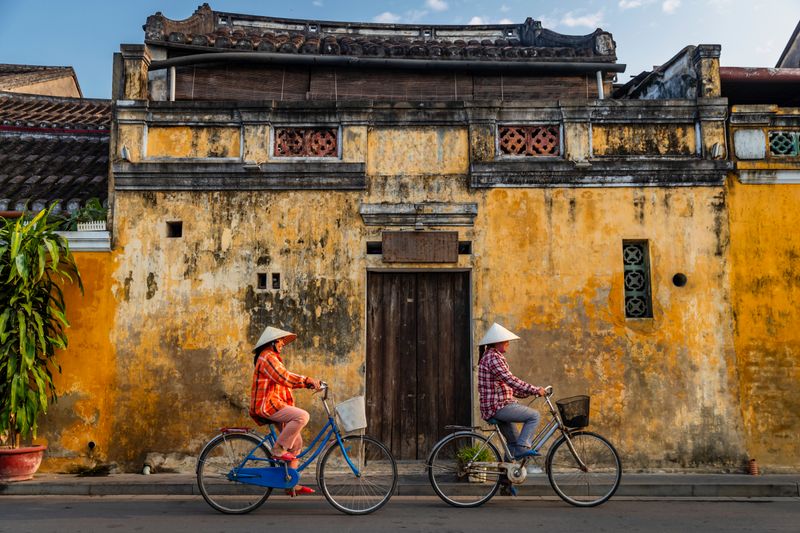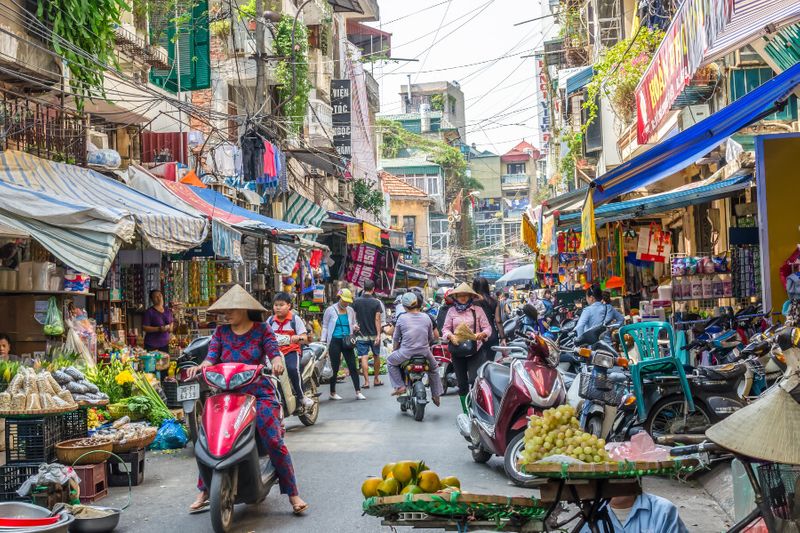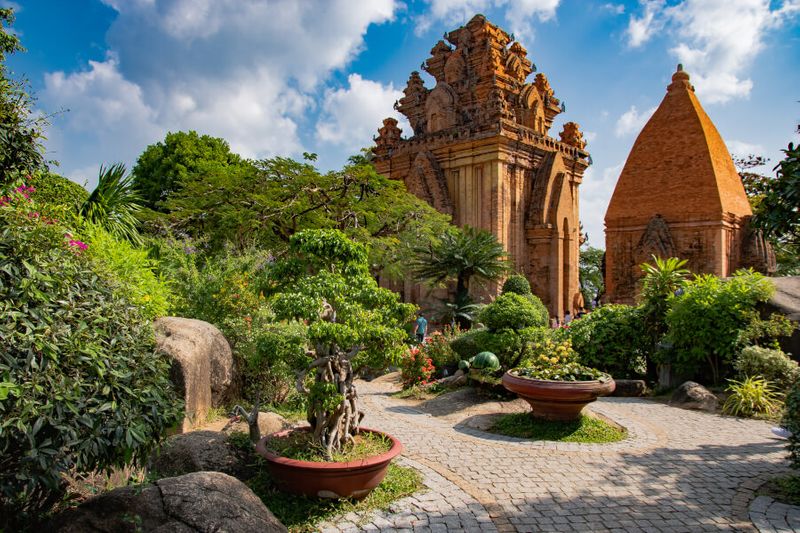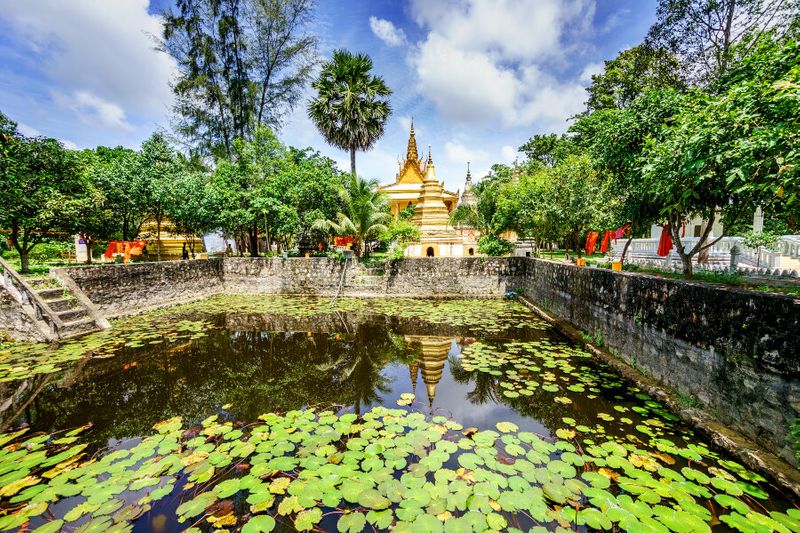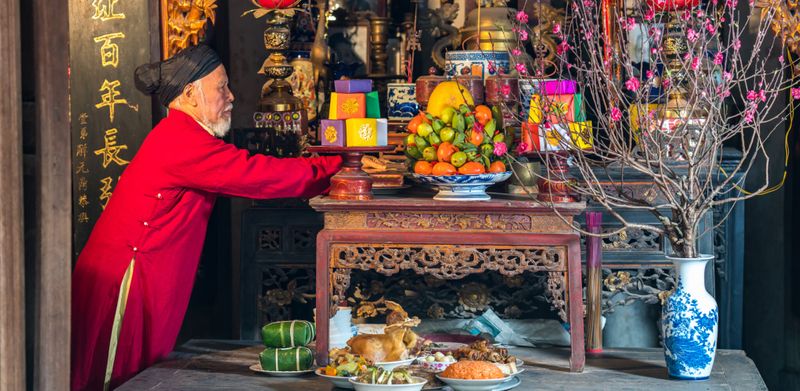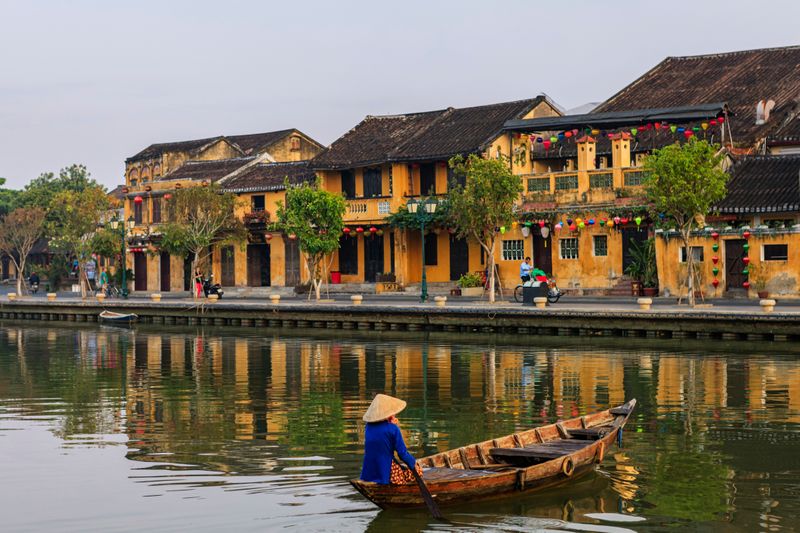For many travellers, Vietnam is a country of striking contrasts—peaceful countryside and chaotic cities, timeless customs and a modern edge. But beyond the surface, there’s a deep-rooted regional character that many first-time visitors don’t anticipate: the cultural and historical distinctions between the north and the south.
The Vietnam War may have etched these differences into the world’s memory, but they weren’t the beginning of the story and certainly don’t define the country today. Long before the 20th century, the regions had developed distinct identities, shaped by different empires, religions, and foreign influences. Even today, decades after reunification, those differences remain subtly woven into daily life.
First impressions: North Vietnam vs South Vietnam
Whether you're walking the lantern-lit streets of Hanoi or zipping through Ho Chi Minh City (formerly Saigon) on the back of a scooter, the contrast is palpable—not just in climate or scenery, but in how people speak, live, and think. Every bowl of pho and sip of tea tells a deeper story.
For first-time travellers, the distinction is immediate. In younger, more modern Ho Chi Minh City, the heat hits fast—and so does the pace. Scooters weave past colonial-era buildings, and locals are known for their warm hospitality and openness. The city feels energetic, outward-looking, and Western influences are everywhere.
In Hanoi, the atmosphere shifts—life slows, the streets feel more compact, and history feels present on every city corner. The difference isn’t better or worse—it’s just undeniably present. And as a visitor, travelling between North Vietnam and South Vietnam can feel like visiting two distinct countries within one.
To understand why these regional distinctions exist, it helps to look back—far beyond the war—to Vietnam’s complex past.
A brief history of the contrast
For over a millennium—from 111 BCE to 938 CE—northern Vietnam was under Chinese imperial rule, which left a lasting imprint on its architecture, governance, religion, and cuisine. Even after independence, Chinese cultural influences remained strong, especially in the north.
Meanwhile, in the central areas (and to a lesser degree the southern area), the influence came in the form of the Indo-Malays, called the Champas, who ruled from 192 to 1832. In the far south, along the Mekong Delta, variously the Khmer Empire of Cambodia and the Champa kings battled it out for supremacy.
In the late 1700s, the admired leader Quang Trung briefly brought the country together—but it was Emperor Gia Long who, in the early 1800s, laid the foundations for the Vietnam we know today. But before long, the French colonialists, Japanese imperialists, and Chinese communists began dividing the country once more.
Tensions culminated in 1954, when the Geneva Accords 1954 officially split the country into North Vietnam and South Vietnam, drawing the 17th parallel as a temporary dividing line across central Vietnam, near the Ben Hai River in Quang Tri Province. This arrangement laid the groundwork for what would become the Vietnam War. A clash of ideologies as much as armed forces.
While Vietnam today is forward-facing, reminders of its complex past can still be found—in its cultural landscape and, especially, in how the war is remembered. Hanoi’s war museums focus on national pride and reunification. In contrast, Ho Chi Minh City’s War Remnants Museum presents a more emotive view, highlighting the human cost of conflict, both Vietnamese and foreign.
Culture shift: What feels different between North and South
Vietnam is officially atheist as a communist country, but many people still practise folk religions, worshipping local spirits and gods during festivals like those for fertility or harvest. The Cham people, once powerful in central and southern Vietnam, brought with them spiritual traditions rooted in Indian Hinduism—something you can still see in the striking ancient temples dotting the region today.
In contrast, North Vietnam has a strong Chinese influence, with Buddhism, Daoism, and Confucianism shaping the style of its pagodas and temples.
Another significant cultural difference lies in local festivals and the observance of traditional customs. While Tet, the Vietnamese New Year, is celebrated throughout the country, its significance and customs can vary widely. In North Vietnam, Tet is more subdued, with a stronger emphasis on family gatherings and respect for ancestors. In the south, Tet tends to be more festive, with lively public celebrations and an emphasis on fresh starts and optimism for the new year.
Just as religious and festival traditions differ between regions, so too does the way people speak—a reflection of Vietnam’s diverse cultural influences and historical development.
Language and local communication
Vietnam’s regional dialects tell their own rich stories, shaped by centuries of cultural exchange with neighbours like China and Cambodia. From the lyrical tones of Hanoi to the earthy drawl of the south, language in Vietnam reveals the country’s beautifully diverse identity.
Education, television and the internet have ensured language has been increasingly uniform but rural areas still use many hundreds of different dialects (which can even confuse native speakers!).
Foodie adventures: North vs South
Vietnamese cuisine has been shaped by its geographical location and the historical north-south contrast. Bowls of soupy noodles like pho are devoured in northern Vietnam’s cooler climate, while rice remains a cherished staple from the hills to the sea. Each region brings its own flavours and preferences, creating a delicious culinary landscape for visitors to explore.
In contrast, South Vietnam embraces a sweeter and spicier flavour profile, heavily influenced by neighbouring countries like Thailand and Cambodia. The use of sugar and coconut milk is more common in the south, thanks to the tropical climate that also fosters an abundance of herbs and spices.
A bowl of pho in the south is typically packed with more colourful flavourings than its northern counterpart, which is often considered more authentic. But regardless of the region, Vietnamese cuisine offers a delicious variety for food lovers.
Tea vs coffee culture
Coffee plays a major role in Vietnamese daily life, with notable regional differences. From Hanoi’s egg coffee to Saigon’s sweet iced brews, each city puts its own spin on this national favourite. While you can find amazing coffee in Hanoi, much of it is grown in the Central Highlands, north of Ho Chi Minh City. However, many northerners prefer hot green tea, partly influenced by their northern neighbours in China and the cooler climate.
Iced coffee is a daily ritual in South Vietnam, shaped by the warmer climate and a vibrant café culture. The influence of the warm climate and local culture makes this coffee style the drink of choice for many in the south.
Fill your cup: The coffee and tea ritual in Vietnam
From the bustling streets of South Vietnam to the quieter corners of the north, a simple hot cuppa offers a fascinating glimpse into the regional character of Vietnamese culture.
Coffee consumption
- Vietnamese iced coffee is a beloved staple in Vietnam and a favourite worldwide—ranked among the top five iced coffees by TasteAtlas, alongside caffeinated classics like Cuba’s café Cubano and Greece’s espresso freddo.
- The Central Highlands produces 40% of the world’s Robusta coffee, with most exports going to the south.
Tea consumption
- North Vietnam is more inclined to drink traditional hot green tea, influenced by Chinese culture.
- Despite coffee’s popularity in Hanoi, the region still holds a preference for tea as a daily ritual.
Climate and scenery: North to South contrasts
The cultural contrasts in Vietnam are reflected in its environment. North Vietnam has a subtropical climate with four distinct seasons.
The north experiences four distinct seasons, with cooler, misty winters and warm summers, making it an ideal destination for visitors seeking to explore the countryside, especially in autumn (September to November) when the weather is pleasant, and the landscapes are colourful.
In contrast, South Vietnam is warmer year-round, thanks to its tropical climate and, in general, enjoys two main seasons—dry and rainy. The best time to visit the south is during the dry season, from December to April, when it’s sunny and warm.
Both regions have their charm, and on an Inspiring Vacations tour to Vietnam, you’ll get the most out of your trip regardless of the season you visit.
Personality and pace
North Vietnam is often seen as more formal and business-focused, shaped by its historical role as the political and cultural centre. It tends to prioritise tradition rather than innovation.
On the other hand, South Vietnam is known for its warm, welcoming nature. Southerners are often described as entrepreneurial, innovative, and creative. Making connections and friends, and leading a vibrant, open social life are the norm. This contrast in personality may simply stem from the climate and lifestyle, but it also reflects the cultural distinctions between North Vietnam and South Vietnam.
Timing your Vietnam adventure for the best experience
Cuisine, culture, history, landscapes and some of the nicest people on earth – what’s not to love about visiting Vietnam? Vietnam was the very first destination Inspiring Vacations launched tours to, and continues to be one of our most popular. But when is the best time to visit?
North Vietnam:
- Autumn (September to November): Pleasant temperatures and stunning landscapes.
- Spring (March to May): Warm but not too hot, ideal for sightseeing.
- Winter (December to February): Colder temperatures, especially in mountainous areas, perfect for exploring the highlands.
South Vietnam:
- Dry Season (December to April): Best time to visit for sunny, warm weather and outdoor activities.
- Rainy Season (May to November): Occasional downpours, but still manageable for beach and city visits.
Ready to say Good Morning, Vietnam? Inspiring Vacations’ Vietnam tours range from our 9 Day Highlights Of Vietnam Premium Small Group Tour to our 23 Day Vietnam & Mekong Delta In Depth Small Group Tour. Read about staff memberAleisha’s tour experience on our popular 10 Day 5 Star Memoirs of Vietnam tour and book today!
